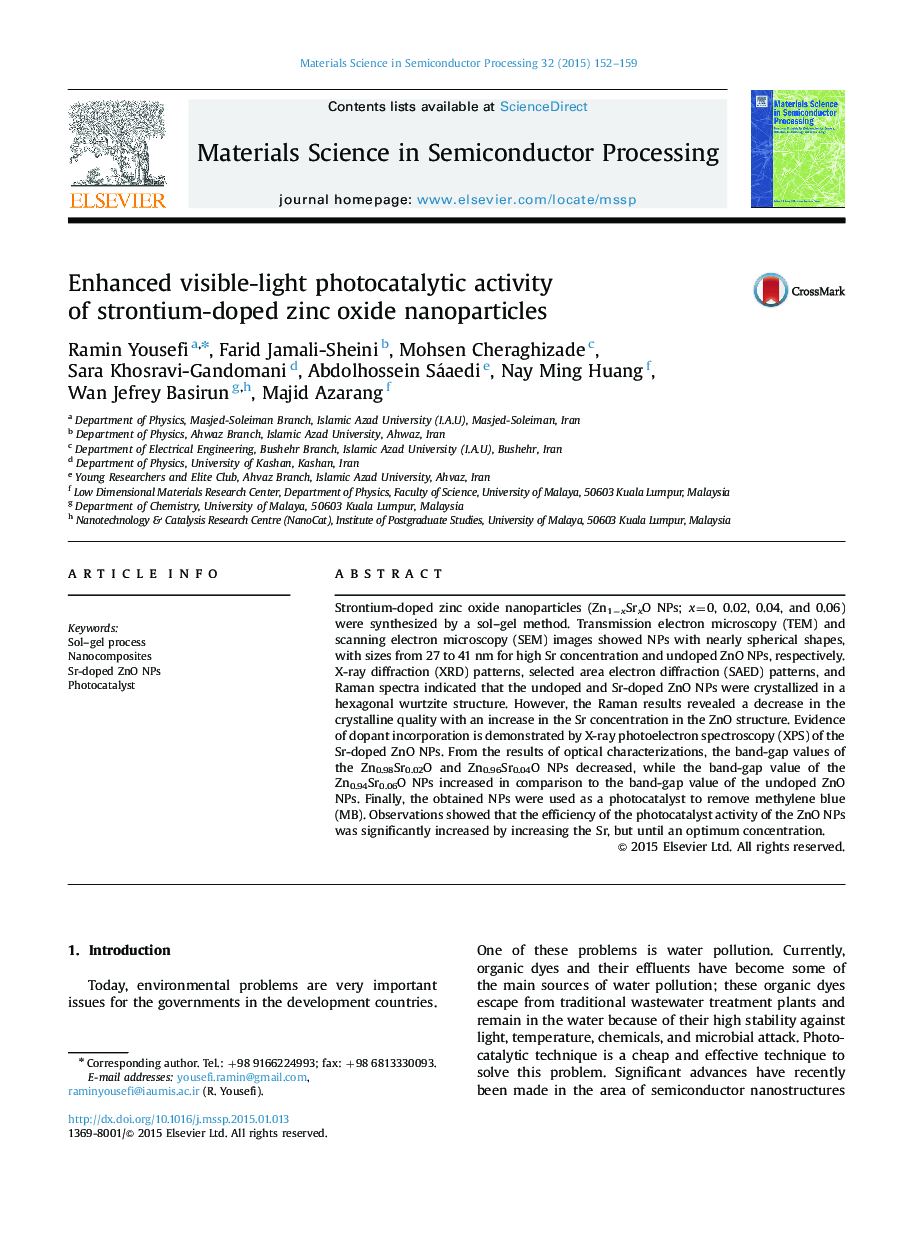| Article ID | Journal | Published Year | Pages | File Type |
|---|---|---|---|---|
| 7119447 | Materials Science in Semiconductor Processing | 2015 | 8 Pages |
Abstract
Strontium-doped zinc oxide nanoparticles (Zn1âxSrxO NPs; x=0, 0.02, 0.04, and 0.06) were synthesized by a sol-gel method. Transmission electron microscopy (TEM) and scanning electron microscopy (SEM) images showed NPs with nearly spherical shapes, with sizes from 27 to 41Â nm for high Sr concentration and undoped ZnO NPs, respectively. X-ray diffraction (XRD) patterns, selected area electron diffraction (SAED) patterns, and Raman spectra indicated that the undoped and Sr-doped ZnO NPs were crystallized in a hexagonal wurtzite structure. However, the Raman results revealed a decrease in the crystalline quality with an increase in the Sr concentration in the ZnO structure. Evidence of dopant incorporation is demonstrated by X-ray photoelectron spectroscopy (XPS) of the Sr-doped ZnO NPs. From the results of optical characterizations, the band-gap values of the Zn0.98Sr0.02O and Zn0.96Sr0.04O NPs decreased, while the band-gap value of the Zn0.94Sr0.06O NPs increased in comparison to the band-gap value of the undoped ZnO NPs. Finally, the obtained NPs were used as a photocatalyst to remove methylene blue (MB). Observations showed that the efficiency of the photocatalyst activity of the ZnO NPs was significantly increased by increasing the Sr, but until an optimum concentration.
Related Topics
Physical Sciences and Engineering
Engineering
Electrical and Electronic Engineering
Authors
Ramin Yousefi, Farid Jamali-Sheini, Mohsen Cheraghizade, Sara Khosravi-Gandomani, Abdolhossein Sáaedi, Nay Ming Huang, Wan Jefrey Basirun, Majid Azarang,
